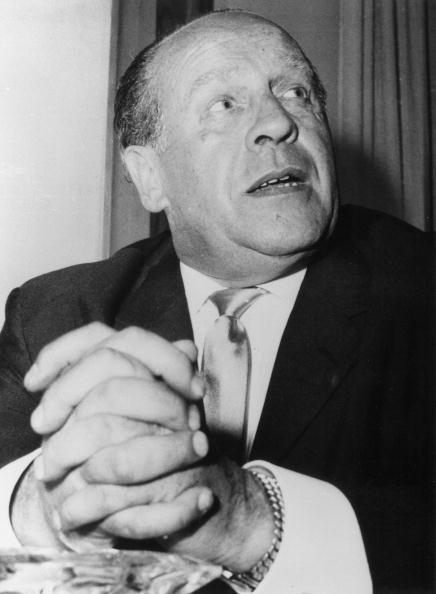This morning, I read an excellent essay, written by Sally Friedman, for The Philadelphia Inquirer, which was published about a week ago.
It is hard to believe that it was 20 years ago, that Schindler’s List was first shown in theaters. Even people, who knew about the Holocaust, twenty years ago, actually knew virtually nothing about the Holocaust. It was the movie, Schindler’s List, that introduced the world to the Holocaust.

Scene from Schindler’s List
This quote is from the beginning of Ms. Friedman’s essay:
Twenty years ago, sitting in a suburban movie theater watching Steven Spielberg’s film Schindler’s List, I had an awakening. The kind that ignites nerve endings.
I knew that Jews, my people by birth and heritage, had been systematically killed by the Nazis simply because they were Jewish.
So the Nazis killed the Jews simply because they were Jewish? What was it about the Jews that caused to Nazis to want to get rid of them?
Let’s go back to the beginning of the Nazi party, back to 1920, when Hitler published his “25 points” which was the basic principles, upon which the Nazi party was founded.
Remember that, in 1920, it had been only two years since Germany had lost World War One. Hitler believed that it was the actions of the Jews that had caused Germany to lose the war.
Point number 24. is the most important point in the 25 Points:
24. We demand freedom for all religious faiths in the state, insofar as they do not endanger its existence or offend the moral and ethical sense of the Germanic race.
The party as such represents the point of view of a positive Christianity without binding itself to any one particular confession. It fights against the Jewish materialist spirit within and without, and is convinced that a lasting recovery of our folk can only come about from within on the principle:
COMMON GOOD BEFORE INDIVIDUAL GOOD
Hitler believed that the Jews were not working for the “common good” of the German people, but for the individual good of the Jews.
There were also a few other points in the 25 Points, which applied to the Jews:
11. That all unearned income, and all income that does not arise from work, be abolished.
12. Since every war imposes on the people fearful sacrifices in blood and treasure, all personal profit arising from the war must be regarded as treason to the people. We therefore demand the total confiscation of all war profits.
[…]
16. We demand the creation and maintenance of a sound middle-class, the immediate communalization of large stores which will be rented cheaply to small tradespeople, and the strongest consideration must be given to ensure that small traders shall deliver the supplies needed by the State, the provinces and municipalities.
17. We demand an agrarian reform in accordance with our national requirements, and the enactment of a law to expropriate the owners without compensation of any land needed for the common purpose. The abolition of ground rents, and the prohibition of all speculation in land.
18. We demand that ruthless war be waged against those who work to the injury of the common welfare. Traitors, usurers, profiteers, etc., are to be punished with death, regardless of creed or race.
Look at point number 16. The Jews had invented the idea of a “department store,” where each section of the store was owned by a different person. Meanwhile, the German craftsmen were selling their wares from their own residence. The Germans lost business because customers wanted to go to a big store where there was goods of every kind, being sold by the Jews, and they could do their shopping under one roof.
Let’s read Point 24 again:
The [Nazi] party as such represents the point of view of a positive Christianity without binding itself to any one particular confession. It fights against the Jewish materialist spirit within and without, and is convinced that a lasting recovery of our folk can only come about from within on the principle:
COMMON GOOD BEFORE INDIVIDUAL GOOD
Did you catch this part?: “[the Nazi party] fights against the Jewish materialistic spirit…
The term positive Christianity is explained on this website: http://www.historylearningsite.co.uk/positive_christianity.htm
This quote is from the website, cited above:
[Alfred] Rosenberg saw Positive Christianity as Norse paganism being at one with Christianity. Rather than have the cross as the symbol of Positive Christianity, Rosenberg wanted the sun in the form of a sun cross.
The photo below, taken at the Wewelsburg castle shows the “sun cross.”

The “sun cross” aka the Sun Wheel
To get back to Schindler’s List, this movie boiled everything down to Good vs. Evil. Jews were Good, and anyone who saved Jews was Good. Nazis were Evil, and anyone who wanted to get rid of Jews was Evil.
Oskar Schindler represented Good in the movie, and Amon Goeth, the commandant of the Plaszow camp, represented Evil.
This part of the article by Ms. Friedman really offended me:
Schindler’s List Benefit Film Screening
A benefit film screening for the USC Shoah Foundation-The Institute for Visual History and Education, with guest appearance by Liam Neeson, is at 7 p.m. Thursday at the Prince Music Theater, 1412 Chestnut St. Preceded at 5:30 by a VIP reception and supper with Neeson. Tickets: $100 to $1,000. Information: 215-665-7208 or http://www.benefitscreening.org.
Remember Point 24, which mentioned the “Jewish materialistic spirit”? $1,000 for a movie ticket and a chance to meet Liam Neeson is an example of “materialistic spirit” in my humble opinion.
How many billions of dollars have the Jews made off the Holocaust? If Hitler had a grave, he would be turning over in it, and saying “That’s what I’m talking about.”






















